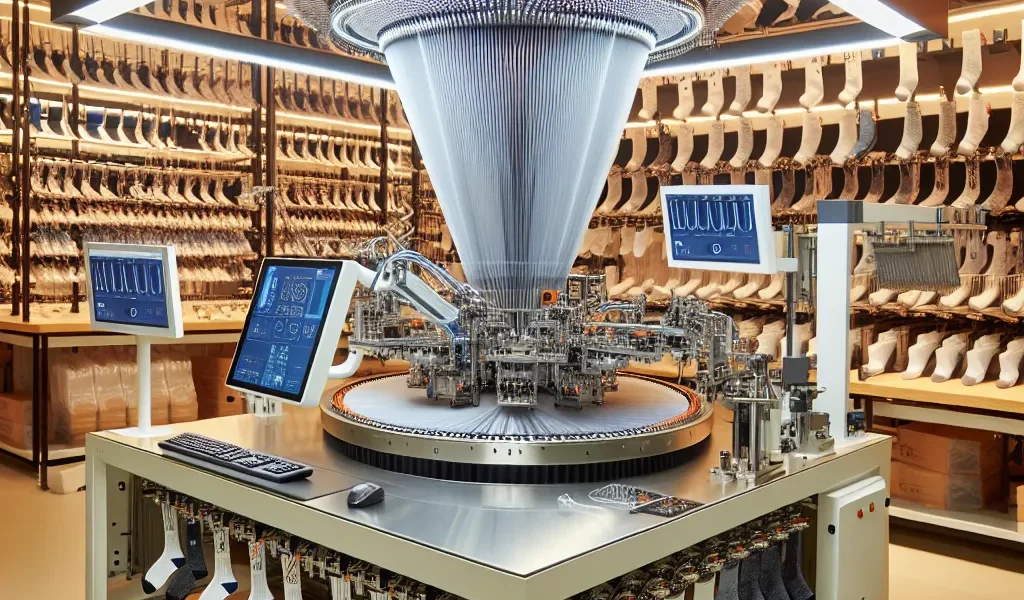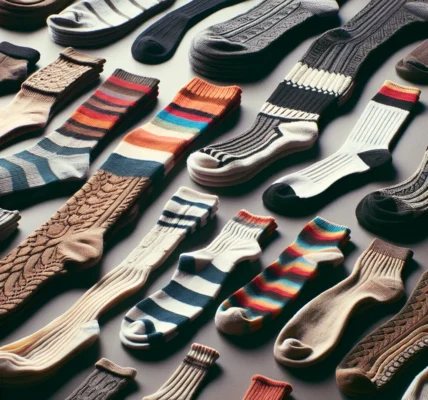Revolutionary 3D Knitting Techniques in Sock Production
Revolutionary 3D knitting techniques have completely transformed the landscape of sock manufacturing, and are poised to revolutionize the industry in unprecedented ways. These innovative techniques utilize advanced knitting machines equipped with multiple needles to create seamless, customized socks with unparalleled precision and efficiency.
One of the key advantages of 3D knitting is its ability to produce socks with intricate designs, varying textures, and targeted cushioning, all in a single manufacturing step. This level of flexibility and customization was previously unimaginable in the world of sock production. Additionally, the seamless construction of 3D-knitted socks enhances comfort and durability, setting a new standard for performance and wearability.
Furthermore, 3D knitting significantly reduces material waste and energy consumption compared to traditional manufacturing methods. By precisely controlling the amount of yarn used in the production process, this innovative technology promotes sustainability and environmental responsibility, aligning with the growing demand for eco-friendly products.
As the demand for personalized and high-performance socks continues to rise, the adoption of 3D knitting techniques is set to become increasingly widespread. This game-changing technology is reshaping the future of sock manufacturing, driving the industry towards greater efficiency, sustainability, and innovation.
Smart Textiles Integration and Sock Development
Modern sock manufacturing has witnessed a revolutionary integration of smart textiles, ushering in a new era of enhanced functionality and comfort. Smart textiles, containing embedded sensors and electronic components, are being seamlessly integrated into the production process, transforming conventional socks into advanced wearable technology. This integration allows for the development of socks with innovative features that cater to the specific needs of the modern consumer.
The incorporation of smart textiles in sock development has paved the way for unprecedented capabilities such as moisture management, temperature regulation, and even health monitoring. Socks embedded with moisture-sensing fibers can actively wick away sweat, ensuring dryness and comfort for the wearer. Additionally, thermoregulatory properties enable the socks to adapt to varying environmental conditions, keeping the feet at optimal temperatures.
Furthermore, smart textiles facilitate the integration of health monitoring technologies into socks, allowing for real-time tracking of vital signs and activity levels. This innovation holds immense potential for applications in sports performance monitoring, healthcare, and overall wellness tracking.
The collaboration between traditional sock manufacturing techniques and the integration of smart textiles represents a significant leap forward in the industry. As demand for functional and performance-driven everyday wear continues to rise, the development of smart socks is poised to shape the future of textile technology and wearable apparel.
Advancements in Sustainable Materials for Sock Manufacturing
Revolutionary technologies have transformed the sock manufacturing industry, especially with the advancements in sustainable materials. The traditional methods of sock production often involved the use of non-renewable resources and toxic chemicals. However, with the growing demand for eco-friendly and sustainable practices, manufacturers have turned to innovative materials to create more environmentally conscious socks.
One of the most significant advancements in sustainable materials for sock manufacturing is the use of recycled fibers. Companies are now utilizing recycled polyester, nylon, and even natural fibers like organic cotton and bamboo viscose to create socks. These materials not only reduce the strain on natural resources but also minimize the environmental impact by diverting waste from landfills.
In addition to using recycled materials, manufacturers are also exploring the potential of biodegradable fibers for sock production. Innovations in biodegradable yarns and fabrics have paved the way for socks that can naturally decompose at the end of their lifecycle, reducing the burden on the environment.
Furthermore, the adoption of sustainable dyeing processes has been a game-changer in the sock manufacturing industry. Traditional dyeing methods often involve the use of harmful chemicals and excessive water consumption. However, with the development of eco-friendly dyes and water-saving techniques, manufacturers can now produce vibrant and colorful socks while minimizing their environmental footprint.
Overall, the advancements in sustainable materials for sock manufacturing signify a positive shift towards eco-conscious practices within the industry. As consumers increasingly prioritize sustainability, these innovative technologies are driving the sock market towards a greener and more sustainable future.
Automation and Robotics: The Future of Sock Production
Revolutionary technologies have transformed the landscape of sock manufacturing, with automation and robotics playing a pivotal role in shaping the future of sock production. Automation and robotics have significantly enhanced the efficiency, precision, and speed of the manufacturing process, leading to higher productivity and superior product quality.
One of the key areas where automation has revolutionized sock manufacturing is in the knitting process. Advanced knitting machines equipped with automation capabilities can produce intricate sock designs with remarkable speed and accuracy. These machines can seamlessly switch between different patterns and yarns, allowing for greater flexibility in production.
Robotics has also been instrumental in streamlining various aspects of sock manufacturing, particularly in the areas of sorting, packaging, and quality control. Automated robotic systems can efficiently sort and package socks, reducing the need for manual labor and minimizing the risk of errors. Moreover, robotic arms equipped with advanced sensors can perform detailed quality inspections, ensuring that only the highest standard socks reach the market.
The integration of automation and robotics in sock manufacturing has not only accelerated production processes but also contributed to cost reductions. By automating repetitive tasks and optimizing resource utilization, manufacturers can achieve significant savings in labor and operational costs, ultimately offering competitive pricing for their products.
Looking ahead, the future of sock production will continue to be shaped by advancements in automation and robotics. From the implementation of machine learning algorithms for predictive maintenance to the utilization of collaborative robots for intricate assembly tasks, the potential for innovation in sock manufacturing is vast.
In conclusion, the convergence of automation and robotics has ushered in a new era of efficiency, precision, and innovation in sock manufacturing. As these technologies continue to evolve, manufacturers are poised to deliver socks that not only meet the highest standards of quality but also demonstrate a commitment to sustainable and cost-effective production.




